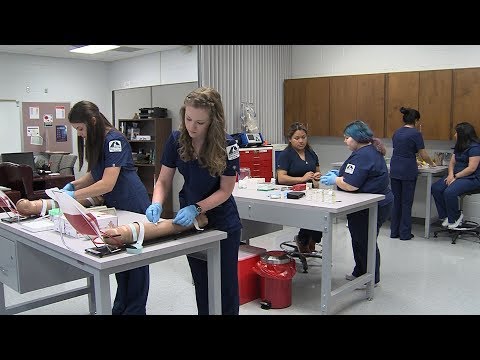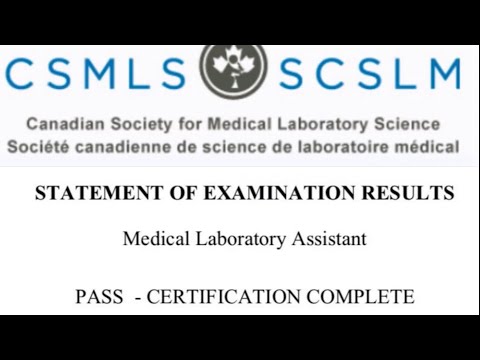EMT vs. Medical Assistant: Which is Right for You?
Contents
- EMT vs. medical assistant Career Comparison
- EMT vs. medical assistant Salary Comparison
- EMT vs. Medical Assistant: Job Outlook
- EMT vs. Medical Assistant: Education and Training Requirements
- EMT vs. Medical Assistant: Skills and Knowledge
- EMT vs. Medical Assistant: Work Environment
- EMT vs. Medical Assistant: Pros and Cons
- EMT vs. Medical Assistant: Which is Right for You?
- FAQs: EMT vs. Medical Assistant
- 10 Things You Didn’t Know About EMTs and Medical Assistants
Considering a career in the medical field? Not sure if you should become an EMT or medical assistant? Here’s a breakdown of the two positions to help you decide which is right for you.
Checkout this video:
EMT vs. medical assistant Career Comparison
Emergency medical technicians (EMTs) and Medical assistants are both health care professionals who provide vital services to patients. However, there are some key differences between these two careers.
EMTs are first responders who provide emergency medical care to patients in need. They are often the first to arrive on the scene of an accident or natural disaster, and their primary focus is to stabilize patients and transport them to a hospital for further treatment. EMTs usually work in ambulances or helicopters, and they must be able to make quick decisions in high-pressure situations.
Medical assistants, on the other hand, provide basic patient care and administrative support in clinics and hospitals. They take medical histories, measure vital signs, prepare patients for examinations, and assist doctors and nurses with routine procedures. Medical Assistants also schedule appointments, file insurance paperwork, and perform other office duties. Although they do not provide emergency care like EMTs, medical assistants often have more direct contact with patients than EMTs do.
Both EMTs and medical assistants play an important role in the health care system. If you are interested in a career in health care, it is important to consider your specific goals and interests before making a decision.
EMT vs. medical assistant Salary Comparison
When considering a career in the medical field, you may be wondering whether to become an Emergency Medical Technician (EMT) or a Medical Assistant (MA). Both roles are important within the healthcare industry, but they differ in many ways. One of the key differences between these two positions is salary.
According to the Bureau of Labor Statistics, the median annual salary for an EMT is $33,380, while the median annual salary for a Medical Assistant is $32,480. While both salaries are relatively low, it is worth noting that EMTs typically work longer hours than MAs. EMTs also have more opportunities for overtime pay and shift differentials.
Additionally, EMTs often have access to better benefits packages than MAs. EMTs are more likely to have health insurance and retirement plans through their employers. They may also be eligible for tuition reimbursement for furthering their education in the medical field.
When making a decision about which career path to take, salary should not be your only consideration. You should also consider your interests, skillset, and work-life balance. However, if you are primarily concerned with earning a higher salary, then becoming an EMT may be the right choice for you.
EMT vs. Medical Assistant: Job Outlook
If you’re interested in a career in the medical field, you may be wondering whether you should become an EMT or medical assistant. Both professions offer a wide range of job opportunities and provide ways to help people in need, but they have different focuses. So, which is right for you?
To make a decision, it’s important to understand the difference between an EMT and medical assistant. An EMT is a first responder who provides emergency medical care when someone is injured or sick. Medical assistants, on the other hand, work in doctors’ offices and other healthcare facilities to provide routine patient care and perform administrative tasks.
The job outlook for both professions is positive. According to the U.S. Bureau of Labor Statistics, employment of EMTs and paramedics is projected to grow 15 percent from 2016 to 2026, faster than the average for all occupations. The growth of the aging baby-boom population will continue to drive demand for EMTs and paramedics because older adults are more likely to have chronic conditions that require medical attention.
Medical assistants are also in high demand. The U.S. Bureau of Labor Statistics projects that employment of medical assistants will grow 29 percent from 2016 to 2026, much faster than the average for all occupations. The growth of the healthcare industry—due to factors such as an aging population and advances in medical technology—will continue to drive demand for these workers.
When considering your career options, it’s important to consider your interests and skillset. Do you want to work in a fast-paced environment where you’re constantly on the go? Or would you prefer a slower-paced job where you can focus on providing quality patient care? Answering these questions can help you decide whether becoming an EMT or medical assistant is right for you.
EMT vs. Medical Assistant: Education and Training Requirements
The first step in becoming an EMT is to complete a training program. Some programs may require you to have a high school diploma or GED, but most only require that you be at least 18 years old. These programs can range from 12 hours to 150 hours, and are offered by a variety of institutions, including community colleges, vocational schools, and emergency medical services providers. Once you have completed an accredited training program, you will need to pass the National Registry of Emergency Medical Technicians (NREMT) exam to become certified.
In contrast, medical assistants are not required to complete any formal education or training beyond a high school diploma or GED. However, many employers prefer to hire candidates who have completed a postsecondary medical assisting program, which can last anywhere from 9 months to 2 years. These programs are available at community colleges, technical schools, and career colleges. After completing a medical assisting program, you can optionally sit for the Certified Medical Assistant (CMA) exam administered by the American Association of Medical Assistants (AAMA).
EMT vs. Medical Assistant: Skills and Knowledge
There are many similarities between the skills and knowledge needed for an Emergency Medical Technician (EMT) and a Medical Assistant (MA). Both occupations require a strong understanding of human anatomy and physiology, as well as excellent communication and customer service skills. However, there are some key differences that you should be aware of before deciding which occupation is right for you.
An EMT is responsible for providing emergency medical care to patients in a variety of settings, including ambulance, fire, and police vehicles, as well as in hospitals and clinics. They must be able to quickly assess a patient’s condition and provide the appropriate level of care, often in high-pressure situations. EMTs must also be able to work effectively as part of a team and communicate clearly with other medical professionals.
MAs are responsible for performing administrative duties in healthcare facilities, such as scheduling appointments, maintaining medical records billing insurance companies, and collecting lab specimens. They also provide clinical support to physicians and other healthcare providers by taking medical histories, measuring vital signs, and administering injections or medications. MAs must have strong attention to detail and excellent organizational skills.
Both EMTs and MAs need to be able to pass a background check and have CPR certification. EMTs also need to complete an accredited training program and pass a national certification exam, while MAs need to have completed at least a postsecondary non-degree award program.
EMT vs. Medical Assistant: Work Environment
When it comes to the medical field, there are many different types of roles that a person can take on. Two of these roles are an emergency medical technician (EMT) and a medical assistant. Both of these positions play an important role in the medical field, but they have some key differences. One of the main differences between these two positions is the work environment. Let’s take a closer look at each one.
An emergency medical technician (EMT) is typically responsible for responding to emergency calls and providing care to patients who are experiencing a medical emergency. This can include everything from administering CPR to transporting patients to the hospital. An EMT typically works in an ambulance or other emergency vehicle and is on call for long shifts.
A medical assistant, on the other hand, works in a variety of healthcare settings including doctor’s offices, clinics, and hospitals. Medical assistants typically have more regular hours than EMTs and their duties vary depending on their employer. However, common duties for Medical Assistants include taking patient vital signs, scheduling appointments, and assisting with office procedures such as injections or casts
EMT vs. Medical Assistant: Pros and Cons
If you’re considering a career in the medical field, you may be wondering whether you should become an EMT or medical assistant. Both roles are important in providing care to patients, but they are quite different. Here’s a look at the pros and cons of each so you can decide which is right for you.
EMT vs. Medical Assistant: Pros and Cons
EMT Pros:
-Can work in a variety of settings, including ambulance services, hospitals, and clinics
-May have more opportunity for overtime and shift work
-Can advance to supervisor or manager position
-Can specialize in a particular area of emergency medicine, such as cardiology or pediatrics
Medical Assistant Pros:
-Work directly with patients and provide hands-on care
-Can work in a variety of settings, including doctors’ offices, hospitals, and clinics
-Typically have regular hours and no overnight shifts
-Receive on-the-job training
EMT Cons:
-Can be stressful and physically demanding
-May work long hours, including overnight shifts
-May be exposed to infectious diseases and hazardous materials
-Must complete extensive training and certification process
Medical Assistant Cons:
-May have less opportunity for overtime or shift work than an EMT
EMT vs. Medical Assistant: Which is Right for You?
There are many different types of medical professionals, each with their own unique roles and responsibilities. If you’re considering a career in the medical field, you may be wondering which type of position is right for you. Two popular choices are EMTs and medical assistants. Both positions have a lot to offer, but they also have some key differences. Here’s a look at what you can expect from each role:
EMTs are first responders who provide emergency medical care to patients in need. They respond to 911 calls, administer CPR and other lifesaving measures, and transport patients to the hospital. EMTs must be able to think quickly and work well under pressure.
Medical assistants are multi-skilled professionals who provide support to doctors and other healthcare providers. They may perform administrative duties such as scheduling appointments and handling billing, or clinical duties such as taking patient histories and administering medications. Medical assistants must be able to multitask and have excellent communication skills.
So, which is right for you? If you’re interested in a fast-paced role where you can make a difference in the lives of others, then an EMT position may be a good fit. If you’re looking for a role that offers more stability and a variety of responsibilities, then working as a medical assistant might be the better choice. Ultimately, the best way to decide is to explore both options and see which one seems like the best fit for your skills and interests.
FAQs: EMT vs. Medical Assistant
So, you’re thinking about a career in the medical field? That’s great! There are many different paths you can take, each with its own set of rewards and challenges. Two popular choices are becoming an emergency medical technician (EMT) or a medical assistant (MA). But how do you know which one is right for you?
Here are some common questions people ask when trying to decide between these two career paths:
What’s the difference between an EMT and an MA?
EMTs are first responders who are trained to provide medical care in emergency situations. They typically work in ambulances and transport patients to the hospital. Medical assistants, on the other hand, work in physicians’ offices and provide assistance with patient care, administrative tasks, and clinical procedures.
What kind of training is required?
Both EMTs and MAs need to complete an accredited training program. EMT programs typically last about six months, while MA programs can last up to two years. EMTs also need to pass a national certification exam, while MAs may need to pass a state-specific exam ( depending on the state).
What is the job outlook like?
The job outlook for both EMTs and MAs is very positive. The Bureau of Labor Statistics projects that employment for EMTs will grow by 15% from 2016 to 2026, while employment for MAs is projected to grow by 29% during that same time period.
How much money can I expect to make?
The median annual salary for EMTs was $32,670 in 2016, while the median annual salary for MAs was $31,540. However, keep in mind that salary can vary based on factors such as experience, location, and employer.
10 Things You Didn’t Know About EMTs and Medical Assistants
You’re interested in a career in healthcare. You’ve done your research, and you think you might like to be an emergency medical technician (EMT) or a medical assistant (MA). But which is right for you?
Here are 10 things you may not know about EMTs and MAs that can help you decide which career is right for you:
1. EMTs and MAs have different educational requirements. To become an EMT, you must complete a certified training program and pass a national exam. To become an MA, you can complete a certificate program, although some employers may require an associate’s degree.
2. EMTs and MAs have different job duties. EMTs respond to emergency calls and provide medical care to patients en route to the hospital. MAs work in physician’s offices and provide clinical support, such as taking patient histories and performing basic lab tests.
3. EMTs must be able to think on their feet. When responding to an emergency call, EMTs must be able to assess the situation quickly and make decisions regarding the best course of treatment. MAs work in more structured settings and do not typically have to make split-second decisions.
4. EMTs must be physically fit. EMS providers must be able to lift patients onto stretchers and into ambulances, sometimes in difficult or dangerous situations. MAs are not typically required to perform such tasks.
5. The working hours for EMTs and MAs can be different. Depending on their assigned shift, EMTs may work long hours, including evenings, nights, weekends, and holidays. The hours for MAs are generally more regular, Monday through Friday during normal business hours.
6. EMTs typically work outdoors in all weather conditions. MAs usually work indoors in climate-controlled environments.
7./8./9./10./







